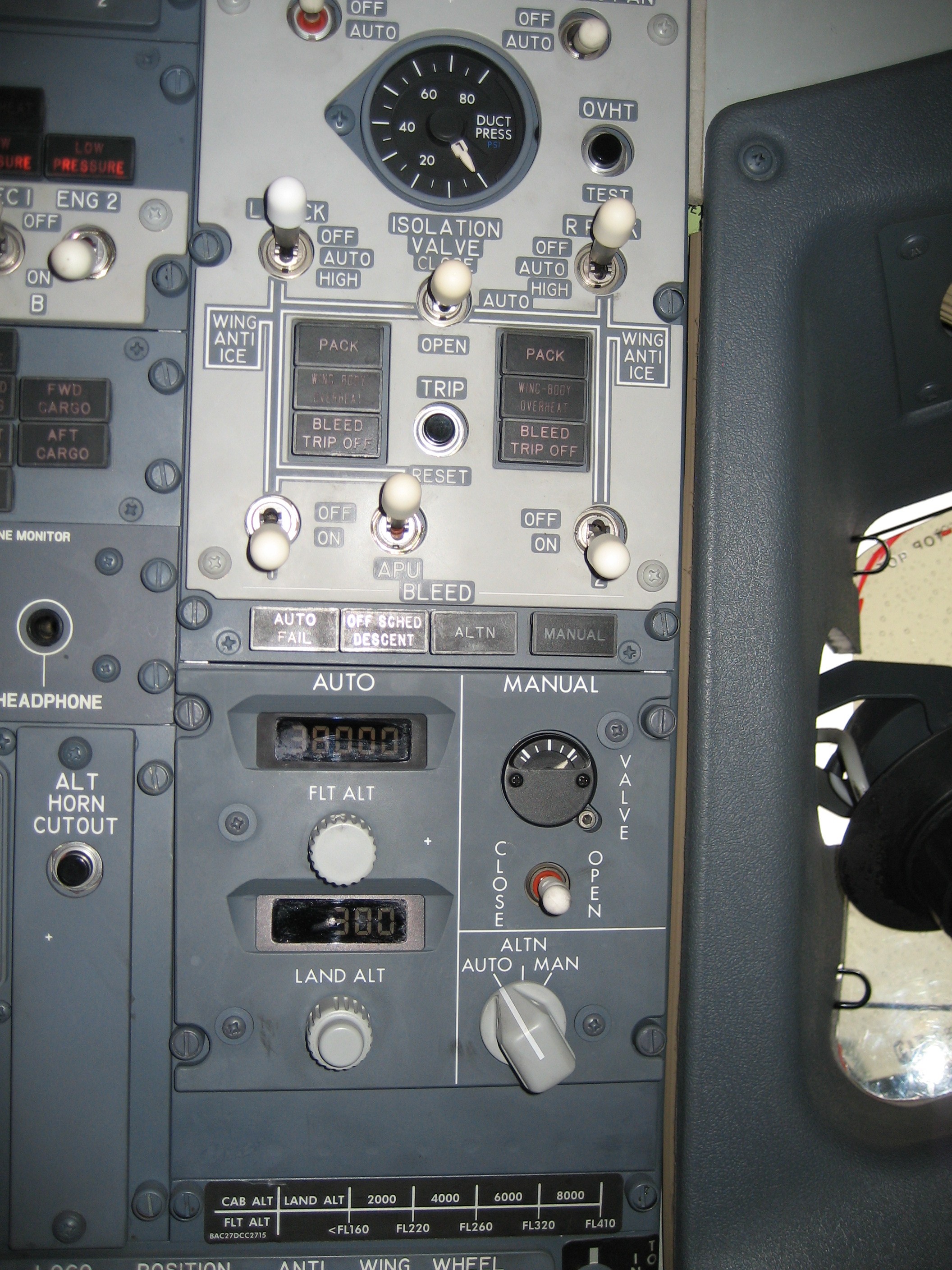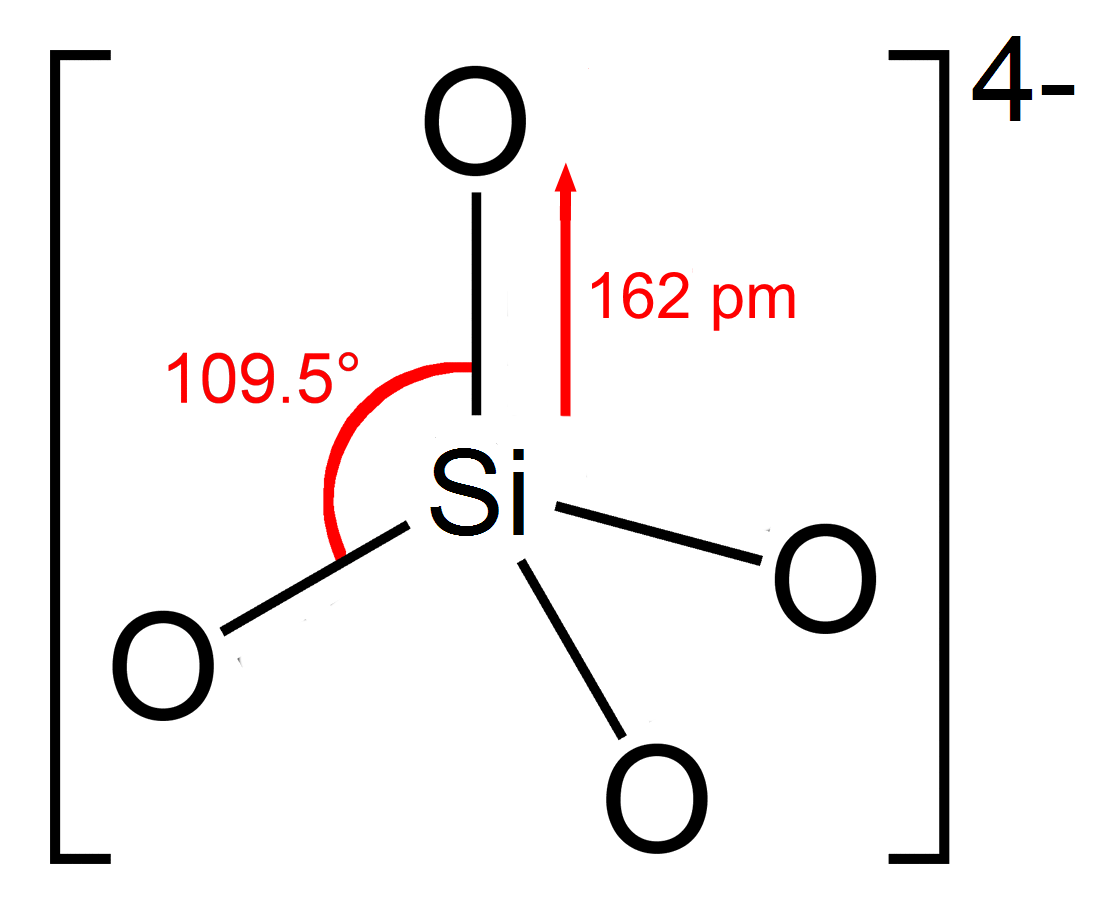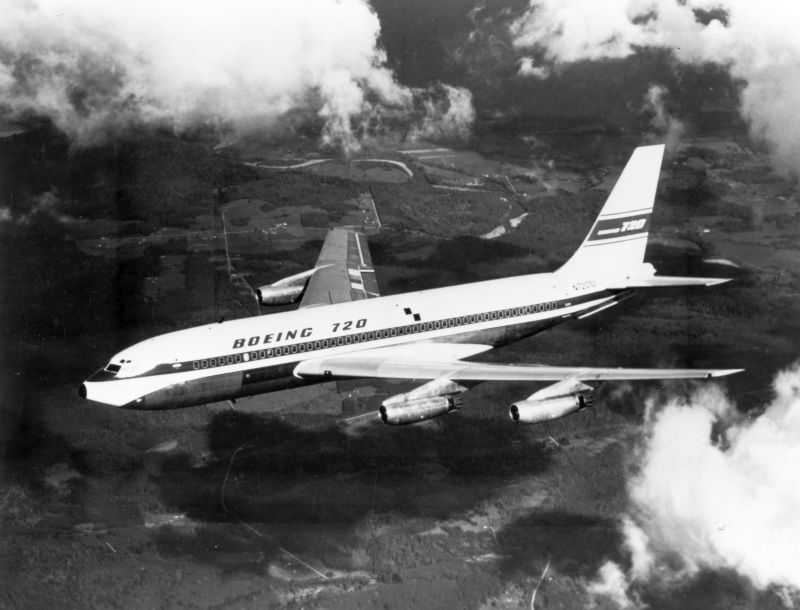|
Skydrol
Skydrol is a fire-resistant aviation hydraulic fluid manufactured by Solutia (now part of Eastman Chemical Company), and formerly manufactured by Monsanto. There are various lines of Skydrol including Skydrol 500B-4, Skydrol LD-4, and Skydrol 5. Skydrol is made of a fire-resistant phosphate ester base stock, with a number of oil additives dissolved into it to inhibit corrosion and prevent erosion damage to servo valves. It also includes a purple or green dye to ease identification. It has been approved by most airframe manufacturers including Airbus, Boeing and BAE Systems and has been used in their products for over 40 years. Characteristics Acid number (the proportional content of acid, not pH) and particulate contamination must be monitored while using Skydrol, and generally hydraulic systems should be sampled every C check. Generally recommended contamination levels should be better than AS4059 Class 7 as new, and should not be allowed to degrade beyond Class 9. Skydrol has ... [...More Info...] [...Related Items...] OR: [Wikipedia] [Google] [Baidu] |
Hydraulic Fluid
A hydraulic fluid or hydraulic liquid is the medium by which power is transferred in hydraulic machinery. Common hydraulic fluids are based on mineral oil or water. Examples of equipment that might use hydraulic fluids are excavators and backhoes, hydraulic brakes, power steering systems, automatic transmissions, garbage trucks, aircraft flight control systems, lifts, and industrial machinery. Hydraulic systems like the ones mentioned above will work most efficiently if the hydraulic fluid used has zero compressibility. Functions and properties The primary function of a hydraulic fluid is to convey power. In use, however, there are other important functions of hydraulic fluid such as protection of the hydraulic machine components. The table below lists the major functions of a hydraulic fluid and the properties of a fluid that affect its ability to perform that function: Composition Base stock The original hydraulics fluid, dating back to the time of ancient Egy ... [...More Info...] [...Related Items...] OR: [Wikipedia] [Google] [Baidu] |
Solutia
Solutia Inc. was an American manufacturer of materials and specialty chemicals including polyvinyl butyral (PVB), ethylene vinyl acetate (EVA), and thermoplastic polyurethane (TPU) interlayers for laminated glass, aftermarket window films, protective barrier and conductive films, and rubber processing chemicals. The company was formed on September 1, 1997, as a divestiture of the Monsanto Company chemical business. In July 2012, the company was acquired by Eastman Chemical Company. Solutia's worldwide headquarters are located in Town and Country, Missouri, United States, with regional headquarters located in Zaventem, Belgium; São Paulo, Brazil; and Shanghai, China. Solutia is currently known as the world's leading manufacturer of PVB, EVA, and TPU interlayers, custom-coated window and performance films, and chemicals for the rubber industry. In 2009, the company completed the sale of its nylon division, with closure of the sale in the second quarter 2009. In 2010, ... [...More Info...] [...Related Items...] OR: [Wikipedia] [Google] [Baidu] |
Bleed Air
Bleed air is compressed air taken from the compressor stage of a gas turbine upstream of its fuel-burning sections. Automatic air supply and cabin pressure controller (ASCPCs) valves bleed air from high or low stage engine compressor sections. Low stage air is used during high power setting operation, and high during descent and other low power setting operations. Bleed air from that system can be utilized for internal cooling of the engine, cross-starting another engine, engine and airframe anti-icing, cabin pressurization, pneumatic actuators, air-driven motors, pressurizing the hydraulic reservoir, and waste and water storage tanks. Some engine maintenance manuals refer to such systems as "customer bleed air". Bleed air is valuable in an aircraft for two properties: high temperature and high pressure (typical values are 200–250 °C and 275 kPa (40 PSI), for regulated bleed air exiting the engine pylon for use throughout the aircraft). Uses In civil aircraft, bleed air ... [...More Info...] [...Related Items...] OR: [Wikipedia] [Google] [Baidu] |
Flash Point
The flash point of a material is the "lowest liquid temperature at which, under certain standardized conditions, a liquid gives off vapours in a quantity such as to be capable of forming an ignitable vapour/air mixture". (EN 60079-10-1) The flash point is sometimes confused with the autoignition temperature, the temperature that causes spontaneous ignition. The fire point is the lowest temperature at which the vapors keep burning after the ignition source is removed. It is higher than the flash point, because at the flash point vapor may not be produced fast enough to sustain combustion. Neither flash point nor fire point depends directly on the ignition source temperature, but ignition source temperature is far higher than either the flash or fire point. Fuels The flash point is a descriptive characteristic that is used to distinguish between flammable fuels, such as petrol (also known as gasoline), and combustible fuels, such as diesel. It is also used to characterize t ... [...More Info...] [...Related Items...] OR: [Wikipedia] [Google] [Baidu] |
Chevron Corporation
Chevron Corporation is an American multinational energy corporation. The second-largest direct descendant of Standard Oil, and originally known as the Standard Oil Company of California (shortened to Socal or CalSo), it is headquartered in San Ramon, California, and active in more than 180 countries. Chevron is engaged in every aspect of the oil and natural gas industries, including hydrocarbon exploration and production; refining, marketing and transport; chemicals manufacturing and sales; and power generation. Chevron traces its history back to the 1870s. The company grew quickly after the breakup of Standard Oil by acquiring companies and partnering with others, especially Texaco. Socal was one of the Seven Sisters that dominated the global petroleum industry from the mid-1940s to the 1970s. In 1985, Socal merged with the Pittsburgh-based Gulf Oil and rebranded as Chevron; the newly-merged company later merged with Texaco in 2001. Today, Chevron manufactures and sel ... [...More Info...] [...Related Items...] OR: [Wikipedia] [Google] [Baidu] |
Silicate Ester
In chemistry, a silicate is any member of a family of polyatomic anions consisting of silicon and oxygen, usually with the general formula , where . The family includes orthosilicate (), metasilicate (), and pyrosilicate (, ). The name is also used for any salt of such anions, such as sodium metasilicate; or any ester containing the corresponding chemical group, such as tetramethyl orthosilicate. The name "silicate" is sometimes extended to any anions containing silicon, even if they do not fit the general formula or contain other atoms besides oxygen; such as hexafluorosilicate .Most commonly, silicates are encountered as silicate minerals. For diverse manufacturing, technological, and artistic needs, silicates are versatile materials, both natural (such as granite, gravel, and garnet) and artificial (such as Portland cement, ceramics, glass, and waterglass). Structural principles In all silicates, silicon atom occupies the center of an idealized tetrahedron whose corn ... [...More Info...] [...Related Items...] OR: [Wikipedia] [Google] [Baidu] |
Concorde
The Aérospatiale/BAC Concorde () is a retired Franco-British supersonic airliner jointly developed and manufactured by Sud Aviation (later Aérospatiale) and the British Aircraft Corporation (BAC). Studies started in 1954, and France and the UK signed a treaty establishing the development project on 29 November 1962, as the programme cost was estimated at £70 million (£ in ). Construction of the six prototypes began in February 1965, and the first flight took off from Toulouse on 2 March 1969. The market was predicted for 350 aircraft, and the manufacturers received up to 100 option orders from many major airlines. On 9 October 1975, it received its French Certificate of Airworthiness, and from the UK CAA on 5 December. Concorde is a tailless aircraft design with a narrow fuselage permitting a 4-abreast seating for 92 to 128 passengers, an ogival delta wing and a Droop nose (aeronautics), droop nose for landing visibility. It is powered by four Rolls-Royce ... [...More Info...] [...Related Items...] OR: [Wikipedia] [Google] [Baidu] |
Boeing 720
The Boeing 720 is an American narrow-body airliner produced by Boeing Commercial Airplanes. Announced in July 1957 as a 707 derivative for shorter flights from shorter runways, the 720 first flew on November 23, 1959. Its type certificate was issued on June 30, 1960, and it entered service with United Airlines on July 5, 1960. A total of 154 Boeing 720s and 720Bs were built until 1967. As a derivative, the 720 had low development costs, allowing profitability despite few sales. Compared to the 707-120, it has a length reduced by 8.33 feet (2.54 m), a modified wing and a lightened airframe for a lower maximum takeoff weight. Originally designed to be powered by four Pratt & Whitney JT3C turbojets, the initial 720 would cover a range with 131 passengers in two classes. The reconfigured 720B, powered by JT3D turbofans, first flew on October 6, 1960, and entered service in March 1961. It could seat 156 passengers in one class over a range. Some 720s were later converted to 720 ... [...More Info...] [...Related Items...] OR: [Wikipedia] [Google] [Baidu] |
Boeing 707
The Boeing 707 is an American, long-range, narrow-body airliner, the first jetliner developed and produced by Boeing Commercial Airplanes. Developed from the Boeing 367-80 prototype first flown in 1954, the initial first flew on December 20, 1957. Pan American World Airways began regular 707 service on October 26, 1958. With versions produced until 1979, the 707 was a swept wing, quadjet with podded engines. Its larger fuselage cross-section allowed six-abreast economy seating, retained in the later 720, 727, 737, and 757 models. Although it was not the first commercial jetliner in service, the 707 was the first to be widespread and is often credited with beginning the Jet Age. It dominated passenger air transport in the 1960s, and remained common through the 1970s, on domestic, transcontinental, and transatlantic flights, as well as cargo and military applications. It established Boeing as a dominant airliner manufacturer with its 7x7 series. The initial, w ... [...More Info...] [...Related Items...] OR: [Wikipedia] [Google] [Baidu] |
Trans-Canada Air Lines
Trans-Canada Air Lines (also known as TCA in English, and Trans-Canada in French) was a Canadian airline that operated as the country's flag carrier, with corporate headquarters in Montreal, Quebec. Its first president was Gordon Roy McGregor. Founded in 1937, it was renamed Air Canada in 1965. History With heavy involvement from C. D. Howe, a senior minister in the Mackenzie King cabinet, TCA was created by the Crown Corporation Canadian National Railway (CNR), and launched its first flight on 1 September 1937, on a flight between Vancouver and Seattle. An air-mail contract with Royal Mail Canada was one of the methods by which TCA was financed.http://www.thecanadianencyclopedia.com/articles/postal-system The creation of TCA was partly by CNR management who wanted to expand the company into the new field of passenger aviation, and was partly by government direction. Prior to TCA, no large national airline existed in Canada. With war looming, and other nations (primarily ... [...More Info...] [...Related Items...] OR: [Wikipedia] [Google] [Baidu] |
Vickers Vanguard
The Vickers Vanguard was a short/medium-range turboprop airliner designed and produced by the British aircraft manufacturer Vickers-Armstrongs. The Vanguard was developed during the mid-to-late 1950s in response to a specification issued by British European Airways (BEA) for a 100 seat airliner; Vickers decided to design such an airliner as a follow-up to the existing Viscount series, the principal difference from which being an expanded airframe that provided considerably more internal volume. Another key innovation was the Tyne engine, which was roughly twice as powerful as the Viscount's Rolls-Royce Dart engine, and allowed for increases in both cruising speed and altitude. Throughout the design process, the needs of two airlines, BEA and Trans-Canada Air Lines (TCA), heavily shaped the Vanguard's specifics. The Vanguard was brought into revenue service on 17 December 1960, around the same time as the commercial availability of a new generation of jet-powered airliners; a ... [...More Info...] [...Related Items...] OR: [Wikipedia] [Google] [Baidu] |
BOAC
British Overseas Airways Corporation (BOAC) was the United Kingdom, British state-owned airline created in 1939 by the merger of Imperial Airways and British Airways Ltd. It continued operating overseas services throughout World War II. After the passing of the Civil Aviation Act 1946, European and South American services passed to two further state-owned airlines, British European Airways (BEA) and British South American Airways (BSAA). BOAC absorbed BSAA in 1949, but BEA continued to operate British domestic and European routes for the next quarter century. A 1971 Act of Parliament merged BOAC and BEA, effective 31 March 1974, forming today's British Airways. For most of its history its main rival was Pan Am. History War years On 24 November 1939, BOAC was created by Act of Parliament to become the British state airline, formed from the merger of Imperial Airways and British Airways Ltd. The companies had been operating together since war was declared on 3 September 1 ... [...More Info...] [...Related Items...] OR: [Wikipedia] [Google] [Baidu] |









